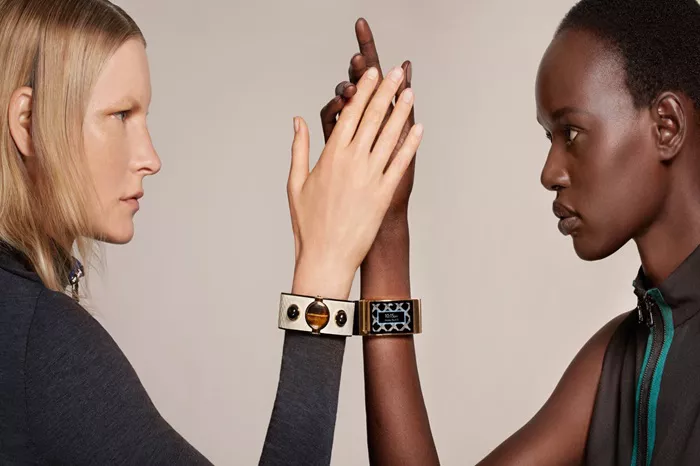The luxury smart jewelry market is projected to reach $430 million by 2030, fueled by the growing demand from Millennials and Gen Z. These younger consumers, who see fitness as a key part of their lifestyle, are helping to drive the trend. However, as tech giants like Samsung and Honor dive into the smart-jewelry sector, the question arises: should traditional jewelry brands embrace smart technology to capture this younger audience?
According to a report from Research and Markets released in November 2024, the global luxury smart jewelry market is expected to grow at a compound annual growth rate (CAGR) of 18.7% from 2024 to 2030.
The Rise of Smart Jewelry and Health Tracking
In 2023, fitness tracking became the dominant feature in the smart jewelry market, with smart rings leading the way. As health monitoring becomes increasingly important, especially due to the rise of chronic diseases worldwide, the demand for smart jewelry continues to grow. The success of Finnish company Oura, which specializes in smart rings, has spurred more companies to enter the market. Oura, founded in 2013 and now valued at $5 billion, has sold over 2.5 million rings. The latest model, the Oura 4, made of titanium, is priced at $249.
Other tech giants, like Samsung and Honor, have followed suit. Samsung recently launched the Galaxy Ring, a sleek, titanium-based product that offers 24/7 health monitoring and personalized insights, even while the user sleeps. Available in titanium, silver, and gold, the Galaxy Ring is priced at Rs. 39,000. Indian tech brand boAt has introduced more affordable smart rings made of stainless steel, priced at around Rs. 3,000. Honor, a subsidiary of Huawei, plans to launch its own smart jewelry ring in early 2024.
Luxury Smart Jewelry for Discerning Customers
While mass-market brands often opt for lightweight, cost-effective materials like titanium, some innovators are offering premium smart jewelry designed for a more exclusive audience. French brand Lumissoly, for example, has created the Souvenir Medallions: NFC-enabled lockets that digitally store personal memories. These medallions, plated in 18-karat gold or rose gold, are priced at €699 and are currently available for order in select European countries.
InvisaWear, another emerging brand, has developed a smart jewelry piece that doubles as a safety device. Their beaded chain necklace features a pendant that, when double-clicked, sends the user’s GPS location to an emergency contact.
North America Leads the Market
In North America, major telecom companies are driving the growth of smart jewelry. Verizon has begun offering the Ultrahuman smart ring, while AT&T has secured an exclusive partnership with Samsung for the Galaxy Ring. The US is expected to remain the dominant market for smart jewelry, thanks to the presence of leading consumer tech brands.
At the IIJS Premiere in August, Jewelex x Ultrahuman unveiled the world’s first luxury smart ring. The ring, crafted from gold and platinum with a PVD coating, tracks various health metrics including heart rate, stress levels, blood oxygen, and sleep patterns. With a six-day battery life, the ring will be available in yellow gold, rose gold, and platinum variants. It is set to launch in 116 countries and is a product of Jewelex’s skilled artisans in India.
India’s Role in the Smart Jewelry Revolution
India, known for being one of the top two markets for precious jewelry and one of the top three markets for consumer technology, is uniquely positioned for the convergence of these two industries. Jewelers who capitalize on the growing demand for smart jewelry may gain a competitive edge in this emerging market.
As technology continues to blend with fashion, smart jewelry is no longer just a trend—it’s becoming an essential part of the modern lifestyle. With the increasing popularity of health and fitness tracking, combined with the allure of luxury, the smart jewelry market is poised for explosive growth in the coming years.
Related topics:

